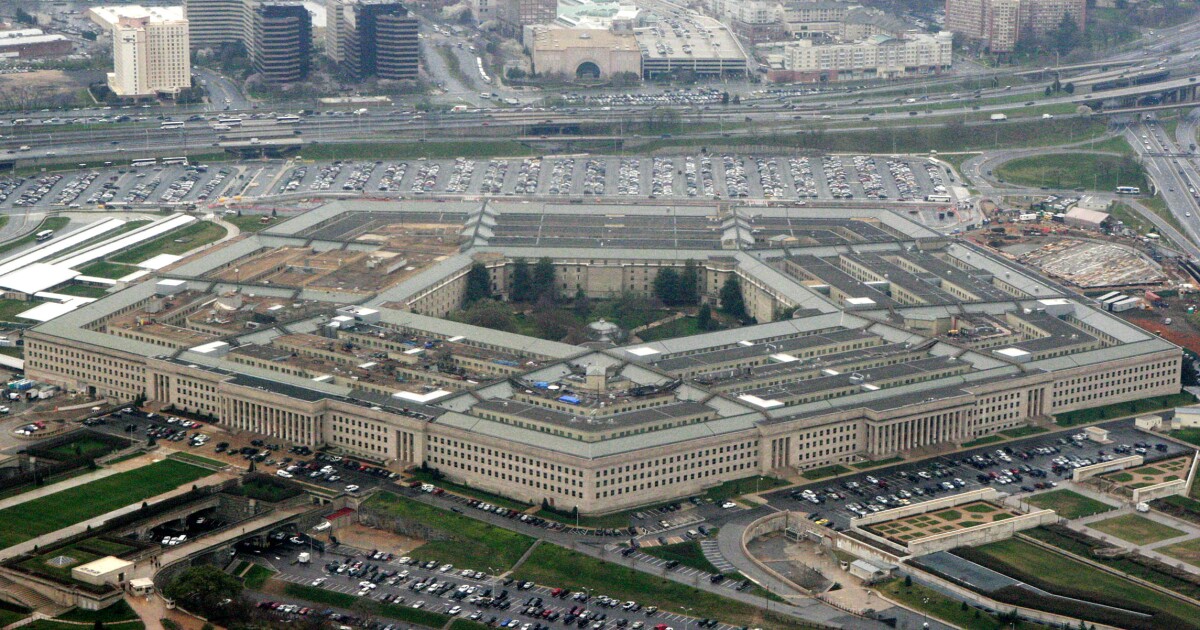

The Department of Defense will pursue the creation of a new nuclear gravity bomb as long as Congress authorizes and appropriates funds for the project.
Pending Congress’s approval, which relevant members have already indicated their support for, DOD would attempt to produce a modernized variant of the B61 nuclear gravity bomb, designated the B61-13. The Department of Energy’s National Nuclear Security Administration (NNSA) would produce the B61-13, which would replace some of the older B61-7s in the current nuclear stockpile and have a yield similar to the B61-7, which is higher than the B61-12.
INFLATION HOLDS STEADY AT 3.4% IN SEPTEMBER IN FED’S PREFERRED GAUGE
A gravity bomb is one in which it is dropped from a plane, and gravity carries it to the intended target. The first production unit of the B61-12 was rolled out in Nov. 2021.
DOD decided, in collaboration with the NNSA, to pursue the new gravity bomb. The department cited the growing threat from adversaries, as outlined in the 2022 Nuclear Posture Review, as part of the reason they decided to pursue this modernization effort.
“Today’s announcement is reflective of a changing security environment and growing threats from potential adversaries,” Assistant Secretary of Defense for Space Policy John Plumb said on Friday. “The United States has a responsibility to continue to assess and field the capabilities we need to credibly deter and, if necessary, respond to strategic attacks, and assure our allies.”
The intent of this pursuit is not to grow the military’s weapons arsenal. The number of B61-13 gravity bombs built will be the same amount decreased from the number of B61-12s produced.
“The B61-13 represents a reasonable step to manage the challenges of a highly dynamic security environment,” Plumb added. “While it provides us with additional flexibility, production of the B61-13 will not increase the overall number of weapons in our nuclear stockpile.”
This bomb would be deliverable by modern aircraft and would provide the commander in chief with another option against harder and large-area military targets. It would include the modern safety, security, and accuracy features of the B61-12.
CLICK HERE TO READ MORE FROM THE WASHINGTON EXAMINER
“While we welcome the step of creating a variant of the B61, which will better allow the Air Force to reach hardened and deeply-buried targets, it is only a modest step in the right direction,” Rep. Mike Rogers (R-AL), chairman of the House Armed Services Committee, and Sen. Roger Wicker (R-MS), ranking member of the Senate Armed Services Committee, said in a joint statement. “The B61-13 is not a long-term solution, but it will provide our commanders, particularly in INDOPACOM and EUCOM, with more flexibility against these target sets. As the Strategic Posture Commission recently noted, China and Russia are in a full-on arms race, and the U.S. is running in place. Dramatic transformation of our deterrent posture — not incremental or piecemeal changes — is required to address this threat.”
The B61 nuclear gravity bomb has been in service for over 50 years and first entered the military’s arsenal in 1968. It’s unclear how much DOD and NNSA believe this project will cost.





